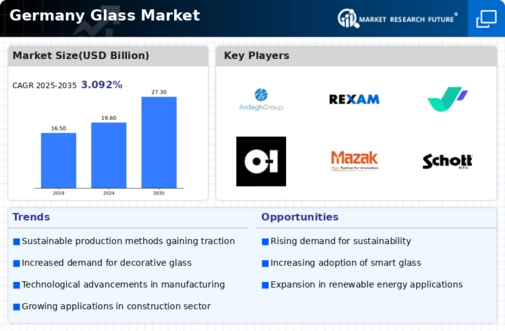The Germany Glass Market is characterized by a dynamic environment that features a variety of players strategically positioned to capitalize on the increasing demand for glass products across multiple sectors. With the ongoing emphasis on sustainability and eco-friendly packaging solutions, the competitive landscape is influenced by factors such as technological advancements, resource availability, and regulatory policy shifting towards greener alternatives. The market is broad, including segments such as containers, flat glass, and specialty glass, where companies deploy innovative techniques and sustainable practices to enhance their offerings.
Analyzing this landscape reveals not only established players but also emerging companies striving to carve out a niche in this competitive arena, which further intensifies the necessity for market participants to differentiate their products and sustain a competitive edge.Ardagh Group stands out in the Germany Glass Market thanks to its robust manufacturing capabilities and commitment to innovation. The company has invested heavily in state-of-the-art technology, allowing it to produce high-quality glass containers that cater to both food and beverage industries. Ardagh Group has established strong relationships with local suppliers, ensuring streamlined operations and sustainability in its supply chain.
Additionally, its responsive approach to market demands has enabled the company to adapt quickly to changing consumer preferences, reinforcing its market presence. Ardagh Group's strong financial position empowers it to invest in research and development, further enhancing its product portfolio while horizontal expansion has allowed for enhanced distribution networks within Germany.In the context of the Germany Glass Market, Rexam has built a notable reputation, particularly in the production of glass containers for beverages. The company's focus on lightweight and recyclable glass products has resonated well with environmentally conscious consumers and brands alike.
Rexam's presence is backed by strategic mergers and acquisitions that have bolstered its market share and operational capabilities. With a diverse range of key products including bottles and jars, Rexam continues to innovate by integrating advanced manufacturing techniques designed to meet stringent quality standards. The company emphasizes sustainability, positioning itself as a leader in providing eco-friendly glass solutions. Its well-established distribution channels in Germany ensure consistent market access, fostering strong partnerships with various beverage manufacturers, thereby fortifying its competitive stance within the market.























Leave a Comment